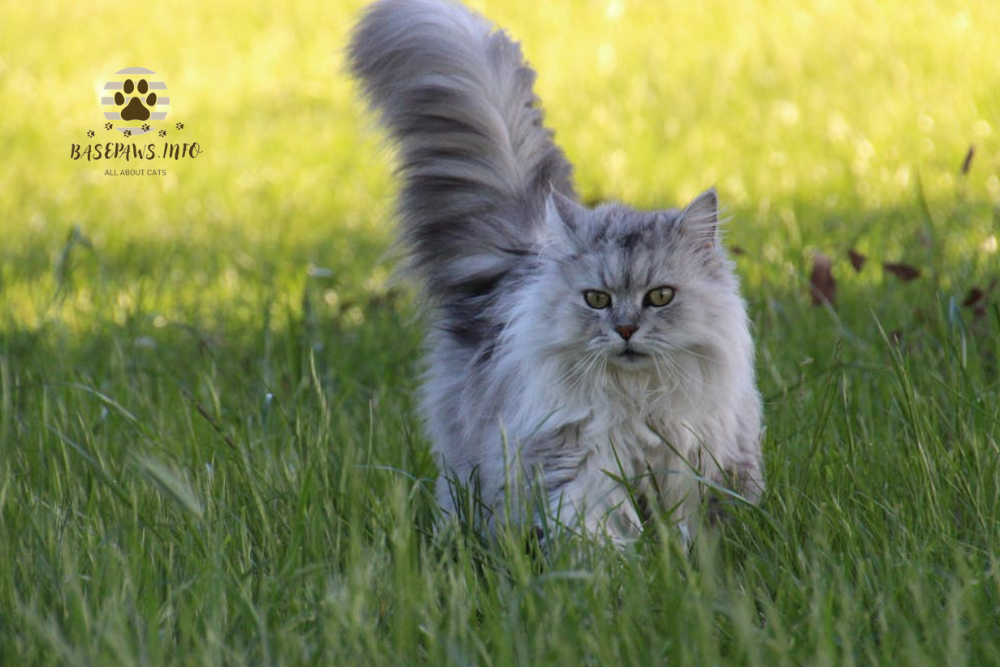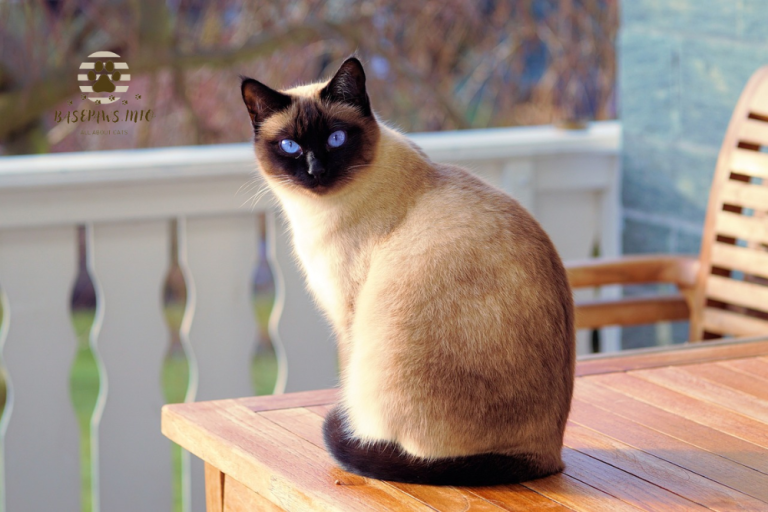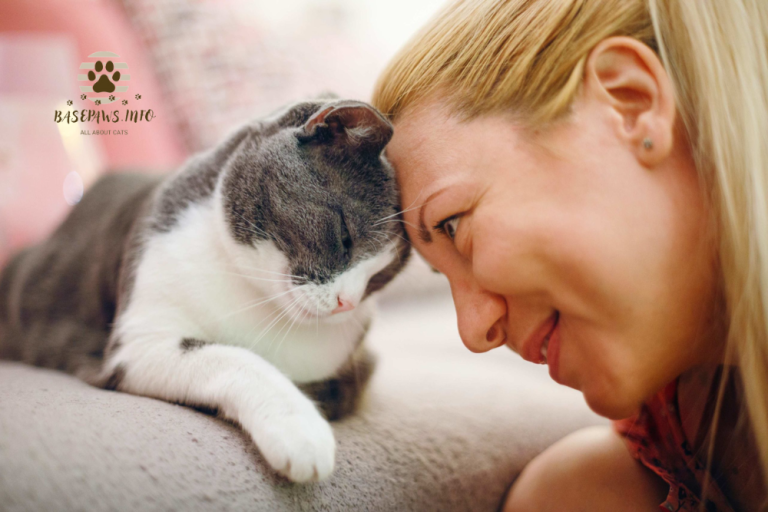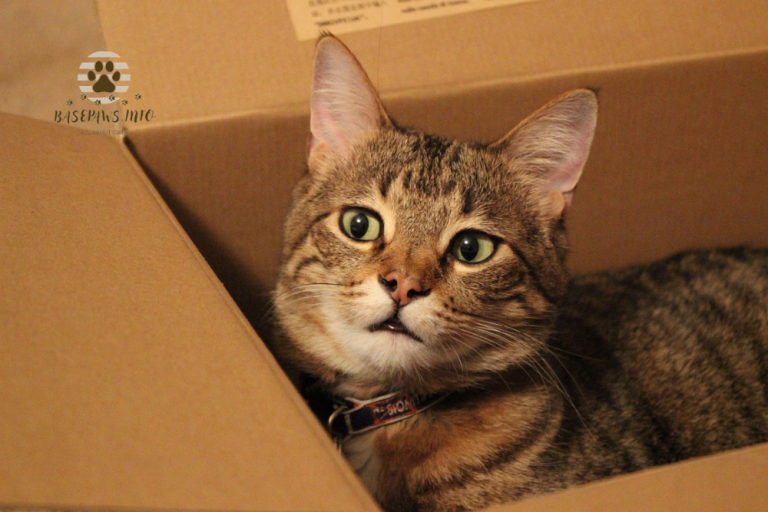Understanding Cat Tail Wagging: Decode Your Cat’s Mood and Strengthen Your Bond
Cat behavior can be confusing, especially when it comes to tail wagging. Unlike dogs, whose tail wags often signal happiness, cats use their tails to communicate a complex range of emotions. For many cat owners, understanding this unique form of communication can be challenging, leaving them unsure of their cat’s mood or how to respond. Misinterpreting a cat’s tail movements can lead to misunderstandings and missed opportunities to bond.
Learning how to decode your cat’s tail language is a simple yet powerful way to deepen your relationship with your feline friend. By recognizing what different tail positions and movements mean, you can better understand their needs and emotions. This knowledge not only improves your interactions but also creates a more peaceful, trust-filled home environment for you and your pet.
In this article, we’ll walk you through cat tail wagging meanings, common behaviors, and how to respond effectively. Whether your cat’s tail is high, twitching, or wrapped around their body, you’ll soon have the tools to understand what your cat is really saying.
The Importance of Understanding Cat Tail Wagging
Understanding why cats wag their tails can greatly improve your relationship with your pet. Tail movements tell us a lot about a cat’s mood, from happiness and curiosity to irritation or fear. When you can interpret these signals, you’ll know when to play, when to give your cat space, and how to respond to their needs. This knowledge leads to a happier, less stressed cat and strengthens your bond with them.
How Cat Body Language Reflects Emotions
Cats communicate with more than just meows. Body language—including tail movements, ear position, and eye contact—shows how they feel. A cat’s tail, in particular, gives important clues about their emotions, often indicating if they’re calm, focused, or uneasy. Learning to recognize these cues helps you understand what your cat needs or wants, creating a more peaceful and enjoyable environment for both of you.
Common Misconceptions about Cat Tail Wagging
- Cats Wag Their Tails Only When Angry: Many believe that tail wagging is solely a sign of anger, but it can also indicate excitement, curiosity, or other emotions.
- All Tail Movements Mean the Same Thing: Different tail movements convey different feelings. For example, a slow swish might mean contentment, while a rapid thrash could signal irritation.
- Wagging Tails Indicate Happiness: While some tail movements can indicate happiness, not all wagging means a cat is joyful. It’s essential to consider the context and other body language cues.
- Cats with Low or Droopy Tails Are Always Upset: A low or droopy tail can indicate fear or submission, but it can also mean a cat is relaxed or comfortable in a safe environment.
- Only Dogs Use Their Tails for Communication: While dogs are well-known for tail wagging as a form of communication, cats also use their tails to express a wide range of emotions.
- Tail Wagging Is Always About Interaction with Humans: Cats may wag their tails for various reasons, including reactions to their environment, playfulness, or while observing other animals.
Table: Decoding Cat Tail Positions and Their Meanings
| Tail Position | Meaning | Emotional State | Action to Take |
| Tail Held Straight Up | Sign of confidence and friendliness. | Happy and approachable | Engage with your cat; this is a good time for play. |
| Question Mark Tail | Indicates curiosity and an invitation to interact. | Interested and playful | Encourage interaction; your cat is feeling social. |
| Low Tail Position | Sign of anxiety, fear, or submission. | Nervous or unsure | Give your cat space; avoid sudden movements. |
| Fluffed-Up Tail | Reaction to a threat or feeling scared. | Alarmed or threatened | Assess the environment; remove any perceived threats. |
| Tail Wrapped Around Body | Shows signs of pain or discomfort. | Uncomfortable or hurt | Check for signs of injury; consult a vet if needed. |
| Thrashing Tail Movements | Indicates irritation or aggression. | Annoyed or upset | Back off; your cat needs space. |
| End of Tail Twitching | Mild annoyance or intense focus on something. | Focused or slightly annoyed | Observe the situation; your cat may be preparing to pounce. |
| Swishing Tail Side to Side | Intense focus or playful mood. | Excited or engaged | Join in the play; your cat is ready for interaction. |
| Quivering Tail | Sign of excitement and happiness. | Joyful | Engage in play or petting; your cat is in a good mood. |
| Bushy Tail | The “Halloween cat” response to fear. | Scared or defensive | Leave your cat alone until it calms down. |
Tail Held Straight Up: Confidence and Friendliness
A tail held straight up often indicates a confident, relaxed cat. When approaching with this position, your cat is feeling social and secure, signaling a positive invitation for interaction.
Question Mark Tail: Curiosity and Invitation
A tail that curves into a question mark shape shows your cat is curious and possibly looking for playful engagement. They’re open to interaction but are gauging your response.
Detailed Cat Tail Wagging Behaviors and What They Mean
Thrashing Tail Movements
- Meaning: This behavior usually indicates irritation or aggression. A thrashing tail often means your cat is unhappy or annoyed, possibly due to overstimulation or discomfort.
- Context: You might observe this during play if the cat feels that the game has gone on too long or when they’re being petted in a way they dislike.
- What to Do: If your cat is thrashing its tail, it’s best to give them space. Avoid petting them until they calm down, and observe their other body language cues for additional context.
End of Tail Twitching
- Meaning: A slight twitch at the end of the tail can indicate mild annoyance or intense focus. This is often seen when a cat is observing prey or concentrating on a specific activity.
- Context: This behavior may occur when your cat is watching birds outside the window or while playing with a toy.
- What to Do: If your cat is twitching its tail, it might be best to remain quiet and still, allowing them to focus on their task without distraction.
Swishing Tail from Side to Side
- Meaning: A side-to-side swishing motion is often a sign of intense focus or playfulness. It can indicate that the cat is preparing to pounce or is very engaged in whatever is capturing their attention.
- Context: You might see this behavior during interactive playtime or when your cat is stalking a toy or a moving object.
- What to Do: Engage with your cat during this behavior; it is a good time to play or provide them with stimulation.
Quivering Tail
- Meaning: A quivering tail usually shows excitement, especially when a cat is greeting someone they know or when they are particularly happy.
- Context: This behavior can occur when you come home after being away or when they are about to receive a treat or meal.
- What to Do: Respond positively to this cat’s behavior by offering affection or treats, as your cat is in a joyful state.
Wrapping Tail Around You
- Meaning: When a cat wraps its tail around you, it is expressing affection, similar to giving you a hug. It signifies that they feel safe and connected to you.
- Context: This behavior often occurs during moments of calmness, such as when you are relaxing together or your cat is seeking warmth and comfort.
- What to Do: Enjoy this moment and reciprocate the affection by gently petting your cat or giving them some attention.
Additional Tail-Related Cat Wagging Behaviors
Why Cats Wag Their Tails While Lying Down
- Meaning: Tail wagging while lying down can indicate mild frustration or a response to external stimuli, such as sounds or movements in their environment.
- Context: This behavior might happen when your cat is watching something intriguing or is slightly annoyed by something happening around them.
- What to Do: If you notice this behavior, check to see if there’s anything bothering your cat. Sometimes, offering them a distraction or toy can help alleviate their frustration.
Sleep Twitch
- Meaning: Tail movements during sleep may be related to dreaming or neuromuscular responses during REM sleep, similar to humans.
- Context: If you see your cat’s tail twitching or moving while they are asleep, they might be dreaming of chasing prey or interacting with other cats.
- What to Do: Allow your cat to continue sleeping peacefully. These twitches are normal and part of their sleep cycle.
Bushy Tail
- Meaning: A bushy tail indicates a sign of fear or feeling threatened. When cats are startled or perceive danger, they puff up their tails to appear larger and more intimidating.
- Context: This behavior is common during unexpected noises, encounters with other animals, or when they feel cornered.
- What to Do: If your cat exhibits a bushy tail, ensure that they have a safe space to retreat to. Assess their environment for potential stressors and reassure them with a calm voice.
Common Cat Communication Cues Beyond Tail Wagging
Eye Contact and Pupil Size
Cats’ eyes give away a lot. Dilated pupils can show excitement, fear, or aggression, while slow blinking is often a sign of affection.
Ear Position and Vocalizations
Ears pointed forward mean a cat is alert, while flattened ears can indicate fear or aggression. Soft purring generally means contentment, while loud meows or hissing may signal displeasure or pain.
Responding to Your Cat’s Tail Wagging Language
Understanding your cat’s tail wagging language is crucial for building a strong bond and ensuring their comfort. Here’s how to effectively respond to various tail movements:
Recognizing When Your Cat Needs Space
- Behavior to Look For: If your cat’s tail is thrashing, bushy, or held low, it often signals irritation, fear, or a desire for solitude.
- What to Do: Respect their space. Avoid approaching or attempting to pet them when they exhibit these behaviors. Instead, allow them time to calm down and approach you when they’re ready. Creating a quiet environment can help your cat feel safe.
Encouraging Positive Interactions with Cat Tail Wagging
- Behavior to Look For: A tail held high, quivering, or gently wrapped around you indicates affection and happiness.
- What to Do: Respond positively by offering gentle petting, speaking softly, or providing treats. Engaging in playtime can also enhance these positive interactions. Make sure to observe your cat’s reactions to your responses; if they seem to enjoy the interaction, continue, but if they withdraw, give them space.
How to Support Your Cat During Times of Stress
- Behavior to Look For: If your cat exhibits a bushy tail or hides with a low tail position, they might be stressed or frightened.
- What to Do: Create a safe and quiet space for your cat where they can retreat and feel secure. Use calming products, such as pheromone diffusers or sprays, to help alleviate their anxiety. When your cat is in this state, avoid overwhelming them with attention or interaction; instead, let them come to you when they feel more comfortable.
Observing Changes in Tail Behavior
- Behavior to Look For: If your cat’s tail behaviors change suddenly—like moving from relaxed to aggressive—it may indicate stress or discomfort.
- What to Do: Pay attention to the context in which these changes occur. Identify potential triggers in their environment, such as loud noises or new pets. Address these stressors and, if necessary, consult a veterinarian if you suspect health issues affecting their behavior.
Building a Positive Environment
- Fostering Trust: Build trust by consistently responding to your cat’s body language. When they feel understood, they are more likely to display positive tail behaviors.
- Interactive Play: Engage in interactive play that respects your cat’s preferences. Use toys that mimic prey to encourage their hunting instincts while also being mindful of their tail language during play.
- Routine and Stability: Establish a daily routine for feeding, playtime, and quiet time. Cats thrive on predictability, which can reduce anxiety and promote calm tail behaviors.
By carefully observing and responding to your cat’s tail wagging language, you create a supportive environment that enhances their emotional well-being and deepens your bond with them. Remember, each cat is unique, so tailor your responses to your feline friend’s specific personality and needs.
Frequently Asked Questions on Cat Tail Wagging
1. Why Do Cats Flick Their Tails When Petted?
- Mild Irritation or Overstimulation: When cats flick their tails while being petted, it can indicate mild irritation or overstimulation. Cats have varying thresholds for how much physical interaction they can handle. If their tail flicks or thrashes, it may be their way of signaling that they are becoming uncomfortable or overwhelmed.
- What to Observe: Look for other signs of agitation, such as flattened ears, twitching whiskers, or a tense body posture. If you notice these signs, it’s best to stop petting and give your cat some space.
- Finding the Right Balance: To ensure positive interactions, pay attention to your cat’s body language and adjust your approach based on their reactions. Some cats prefer shorter, gentler petting sessions, while others may enjoy longer periods of attention.
2. What Does It Mean When Cats Wag Their Tails While Purring?
- Indication of Contentment: When cats wag their tails while purring, it generally indicates a state of relaxation and contentment. This behavior can be seen during moments of affection or while they are comfortable in their environment.
- Ready for a Break: However, it’s important to note that certain tail flicks, even amidst purring, can signal that your cat is nearing their limit and may need a break. If you notice quick flicks or side-to-side movements while purring, your cat might be saying they’ve had enough interaction for the moment.
- Building Awareness: By observing the speed and direction of the tail movement, you can gauge your cat’s emotional state. A slow wag might signify they are enjoying the moment, while a quicker flick could indicate a need to withdraw.
3. Why Do Cats Wag Their Tails When Sleeping?
- Unconscious Movements: Tail movements during sleep are generally unconscious and can occur during the dream state. Just like humans may move or twitch while dreaming, cats often exhibit small tail twitches or flicks as part of their dreaming process.
- Dreaming Behavior: The movements may relate to their dreaming about hunting, playing, or other activities. As cats enter REM sleep, their brains are quite active, and you might notice more pronounced tail movements, as well as twitching of their paws or facial muscles.
- Interpreting Sleeping Behavior: While these tail movements are normal and not a cause for concern, they can also be a delightful reminder of your cat’s playful and active nature. If your cat seems to be in a deep sleep with movements, it’s best to let them rest undisturbed, as sleep is crucial for their overall well-being.
When to Be Concerned About Cat Tail Wagging Movements
If your cat’s tail movement seems unusual or they appear in pain, consult your vet. A tail that stays low for long periods could signal injury or illness.
Enhancing Your Bond with Your Cat Through Tail Wagging
- Building Trust Through Understanding Cat Tail Wagging: Knowing when your cat is open to interaction builds confidence in your relationship.
- Providing a Comfortable Environment for Positive Communication: Ensure your cat has access to cozy resting spots and toys to reduce stress.
- Strengthening Your Relationship by Respecting Boundaries: Always give your cat space when they show signs of needing it.
Understanding cat tail wagging is a game-changer for cat owners. By learning these cues, you’ll not only strengthen your bond but also ensure your cat feels seen, respected, and cared for.







